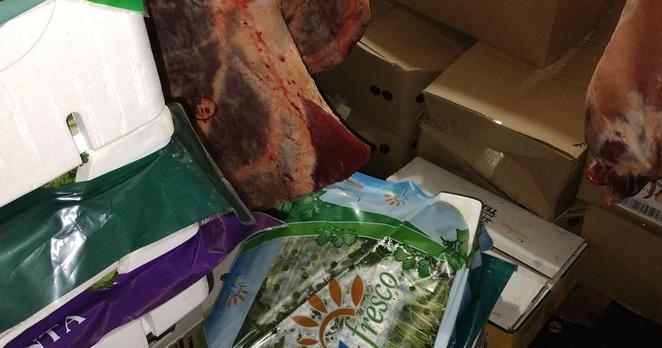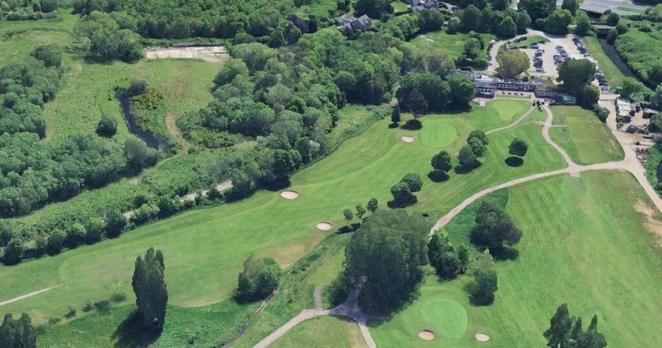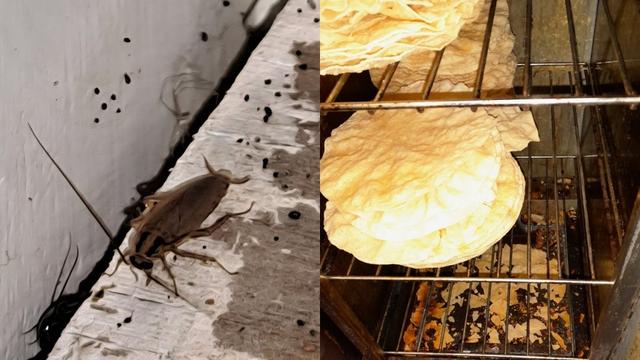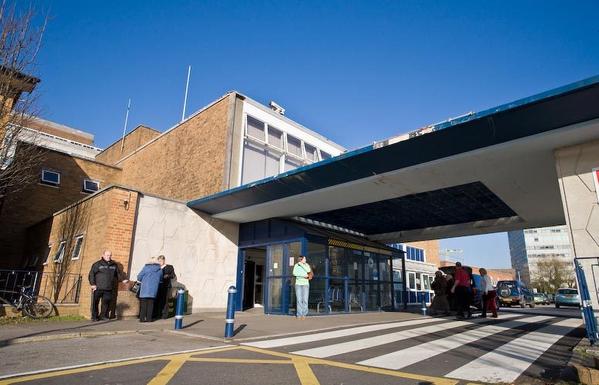Is It Safe to Reheat or Cook Meat?
https://www.poochierevival.info/feeding-a-dog/is-it-safe-to-reheat-or-cook-meat/
In raw feeding, a common question, especially for those experiencing heartburn, is whether meat can be cooked or even heated. There is a fear that something might be lost or that something might become at least useless, even dangerous. The short answer is that heating or cooking meat doesn’t matter at all.
The problem arises because in the compound word raw food or raw feeding, the focus has been on raw due to barfing and living food, not on nutrition and feeding. That’s why I have consistently tried to use the term meat-based feeding instead. Then the focus is on what is essential: the feeding is based on meat.
Cooking changes the structure of meat in several ways:
- proteins become more digestible
- some fat melts
- some water evaporates
- some minerals dissolve
- some vitamins may be destroyed
Table of Contents
Toggle
Denaturation
Cooking initiates the denaturation of proteins. This means that proteins open up into amino acid chains. Denaturation always occurs when the temperature exceeds 42 degrees, which is why a high fever is dangerous. For food proteins, this is absolutely necessary anyway. If it’s not started by cooking, it will be done in the stomach with the help of hydrochloric acid.
The body never uses whole proteins from food, only amino acids. Although pseudoscience might scare people with the idea of proteins dying, in food, they absolutely must die and break down for amino acids to be absorbed. If a protein doesn’t die, it can’t be used. And if a protein is absorbed whole, both we and dogs face two issues: allergy or anaphylactic shock.
Denaturation by heating requires longer cooking, and even then, it’s not an effective method. If it were, a roast would go into the oven and slime would end up on the plate.
If the meat is burnt to a crisp, the situation changes for the burnt part, but honestly – that has nothing to do with cooking and even less with heating.
Fat Melting
Everyone has fried ground beef or prepared some meat in the oven enough to know that fat separates. A lot of fat comes out of a Christmas ham. It doesn’t affect the utilization of fat in any way, but if it’s wasted, then those fat grams are lost. But it’s nothing more complicated than that; fat simply changes its state from solid to liquid. A silly comparison, but it’s exactly the same: the fact that ice melts in warmth doesn’t make water useless or dangerous.
Fat can, of course, be burnt to the point of becoming useless, meaning that fatty acids become ineffective. This is when we’re talking about deep fryers and grill oils. You still get calories from that oil. But again: grill oil has nothing to do with cooking or heating food.
Water Loss and Cooking Waste
When meat is cooked, water is lost. That’s why a roast that weighs a kilo when raw shrinks to about one serving for a grown man. For the same reason, frying ground beef too often means boiling it in its own juices.
Along with the water, some minerals and vitamins, which are water-soluble, are lost. Practically, this means B vitamins in meats, but of course, some trace elements are lost too. In the case of potatoes, vitamin C goes along for the ride.
Regarding vitamins, cooking waste practically means the loss that occurs with water and separated fat. It’s interesting that there’s always a scare about vitamin loss, but never about the loss of trace elements. Similarly, no one worries about the loss caused by drying and grinding antioxidants, which is significantly greater than cooking waste.
One customer was extremely worried about heating in the microwave but still joyfully gave dried rosehip – the microwave does nothing, but drying does, so the focus of the worry was quite misplaced. It’s the same axis to worry about cooking dog meats and organs while eating oatmeal yourself at the same time.
Cooking waste requires long cooking. With boiling, it’s around an hour, and with frying, about the same time at over 200 degrees heat. But still, it doesn’t matter. When a dog is fed according to needs and weight, there’s always enough regardless of cooking waste with or without water. At the same time, you can console yourself with the fact that learning to cook food didn’t drive humanity to the brink of extinction due to vitamin deficiencies – in fact, the opposite happened, and humans began to develop (the usefulness of the end result can be debated).
Heating meat doesn’t waste or lose anything. When frying, the vitamin loss is greater and the mineral loss is lesser when the separated fat is saved – most of the trace elements are there. With boiling, less dissolves, but it’s harder to save the cooking water. If you worry about it for even a moment, you can find peace of mind by cooking with as little water as possible or using the microwave.
And no, the microwave is not dangerous, doesn’t make food unnatural, and doesn’t cause diseases.
Change in Composition
When talking about the change in food composition during cooking, if you clean out the pseudoscience axis’s fantasies about the destruction of proteins, vitamins, and enzymes, the discussion is about the behavior of bones. In general, enzymes shouldn’t be discussed in relation to food at all because food is not a source of enzymes. That’s what organs are for.
Bones don’t become useless or dangerous. Their chemical structure doesn’t change at all. What happens with longer cooking is the drying of the bone. Then its elasticity disappears, and it breaks a bit more easily. However, it’s important to understand that it doesn’t matter to an animal whose entire jaw structure and musculature are built to crush bones. It doesn’t matter whether it requires 50 kilos of bite force per square centimeter or 500 kilos. The result is always the same.
The problem with cooked bones doesn’t come from the drying of the bones but from the size of the bones. Whenever we talk about ribs, we’re talking about human-sized portion pieces cut with a saw at the slaughterhouse. So it’s not about the effect of cooking but the short length of the bone, which makes it easier for a dog to swallow it whole. The risk is exactly the same as with raw bones, but cooked bones are talked about more because dogs steal more cooked leftovers – fewer dogs take the package from the fridge.
If you’re afraid of cooked bones, it’s worth being consistent and avoiding smoked bones and all dry foods.
The risks of bones come from the quantities, not anything else. A dog always faces the same big problems after eating a stomach full of bones, whether they are raw or cooked. Secondly, most intestinal blockages come from raw bones.
Ground bone in a meat loaf doesn’t affect it even that little. You can fry, boil, flame, smoke, or do anything to it, and the bone doesn’t change in any significant way, and the same calcium is obtained from it.
Raw manufacturers, however, prohibit cooking. The best was when even thawing in hot water was prohibited. The prohibition is based on two things.
The first is that food-grade meat is not offered to dogs, and in cooking, the smell of the meat, sometimes even its appearance, becomes repulsive from a human perspective. Then there’s the risk that the customer is a former customer because the smell is imagined to indicate poor quality. It can, of course, be a quality issue, but most often it’s about everything that’s been ground in – like beef stomach.
The second reason is more depressing. It’s genuinely believed that cooking has some significance. It’s even believed that hot water somehow cooks the frozen product into a harmful form. There’s only one piece of advice for this. Never imagine for a second that the food manufacturer or seller knows even the basics about the product they’re selling or its use. Yes, that’s also called incompetence.
Benefits of Heat
When food is heated, it digests a bit faster than cold food. It’s not about the breakdown of proteins because the heating time is too short. It’s specifically and solely about the temperature of the food.
Food starts to melt in the stomach only when it’s about body temperature. Heating cold food takes time and calories, so some of the energy from the food is wasted – the calorie issue is truly negligible. However, the faster start of digestion and thus shorter duration might be beneficial – at least for some with stomach problems.
Warm food smells stronger. The surface of fried food smells even more. The smell is so strong that even humans can smell it. Most of our taste nuances come through the sense of smell, but dogs are different: their sense of taste is practically based entirely on smell (yes, dogs also have taste buds, but far fewer than we do, and they don’t define what tastes good).
A dog prefers cooked food, and even more so fried food, because its smell is more enticing.
In porridge feeding, cooking is also necessary. Otherwise, the food doesn’t digest, at all.
Disadvantages of Heating
The disadvantages of heating or cooking a dog’s food are found in two factors:
- it’s a hassle
- it consumes energy from the power plant
Raw feeding doesn’t bring any advantage, neither nutritional nor health-related, because of rawness itself. Raw is used only because it’s easier for the seller and easier for the customer to put in the bowl. That’s it.
Energy should be saved, but that’s a matter of perspective. If you heat the food, it doesn’t consume many expensive kilowatt-hours. Cooking takes more, but if it’s a requirement for the dog’s health, then it must be done.
People generally are a bit unclear about what meat as food means. Most think they know, and then they ask, for example, how often meat should be given or what color meat would be best.
Life is about learning, so let’s learn what meat means:
- For a dog, meat to fill the stomach
https://podcastit.hel1.your-objectstorage.com/poochie/ai/409.mp3
[ap_hastags]




